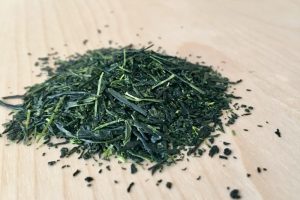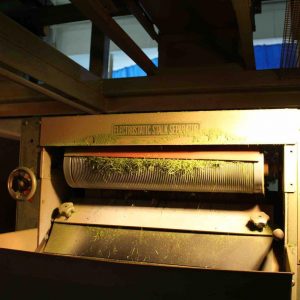
After the initial process is complete, aracha (crude tea) needs to be refined.
In Japan, the refining process (shiage, 仕上げ) is usually done by the tea wholesalers.
This process consists of three basic steps: firing, sorting, and blending.
However, the steps aren’t always in that order. Firing can be either the first or the last step.
I had already written about this subject on an earlier post. In this post, I’ll explain each step in greater detail.
Firing
The firing (hiire, 火入れ) process has the goal of further reducing the moisture content (until about 3%), and improving the aroma and taste of the tea.
There are three main types of tea firing machines: hot air type, rotating drum type, and the far infrared type.
While the machines are different, the idea is the same. The tea leaves must be heated so that the sugars and amino acids react, generating a pleasant aroma and taste.
The exact temperature and time varies for each individual tea. This is decided by the tea blending master.
Note that firing is different than roasting, because the temperature is much lower. Roasted teas like houjicha turn brown.
Sorting
Sorting (senbetsu, 選別) is necessary because aracha consists of different parts, such as leaves of different sizes, stems, buds, and different grades of tea dust.
Tea leaves are sorted at various steps in the process by using mesh screens. These mesh screens have openings of different sizes, so that the tea leaves are sifted into different grades.
In this process the sifting motion can be shaking, rotating, or vibrating.
The desired tea leaves are called honcha (本茶). Tea leaves that are too big (bancha) or too small (small pieces, buds and tea dust) are separated.
Tea sifting machines are often capable of cutting the tea leaves to the right size.
The separations of stems is also an important part of the process. This is how kukicha is made.

One machine with this purpose is the electrostatic tea stem separator.
Since the electrostatic properties of leaves and stems are different, they can be separated that way.
Another machine is often used at the same time: the optical tea stem separator.
It takes advantage of the different color between tea leaves and stems.
There’s also a machine in the sorting process called winnower that blows the tea so that heavier particles are separated from lighter ones.
Blending
In the blending (gōgumi, 合組) process, teas from different origins are mixed.
This sounds simple enough, but only expert master tea blenders have the tea tasting ability and know how required to make a good blend.
Tea blending machines usually consist of a rotating drum.
At last, the tea is ready to be packaged.
Below is a video that shows most of the finishing process.

December 25, 2018
Another very good post Ricardo!
December 26, 2018
Thank you David 🙂
June 29, 2020
Hi, how to find the Japanese suppliers the machinery for set up the automatic plant manufacturer Matcha powder? Thanks. Michael.
June 30, 2020
Hi Michael.
If you contact your local JETRO office, I think that they can point you in the right direction.